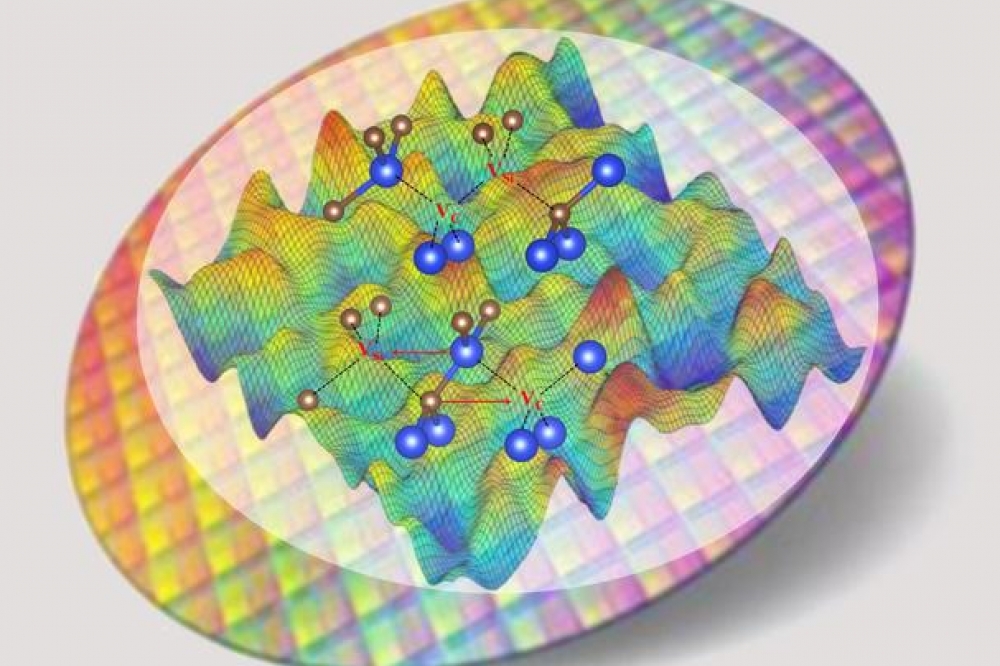Simulations reveal atomic-scale story of qubits

New study predicts the formation process of SiC spin defects useful for quantum technologies
Researchers led by Giulia Galli at University of Chicago’s Pritzker School of Molecular Engineering report a computational study that predicts the conditions to create specific spin defects in SiC. Their findings, published online in Nature Communications, represent a step towards identifying fabrication parameters for spin defects useful for quantum technologies.
Electronic spin defects in semiconductors and insulators are rich platforms for quantum information, sensing, and communication applications. Defects are impurities and/or misplaced atoms in a solid and the electrons associated with these atomic defects carry a spin. This quantum mechanical property can be used to provide a controllable qubit, the basic unit of operation in quantum technologies.
Yet the synthesis of these spin defects, typically achieved experimentally by implantation and annealing processes, is not yet well understood and, importantly, cannot yet be fully optimised. In SiC — an attractive host material for spin qubits due to its industrial availability — different experiments have so far yielded different recommendations and outcomes for creating the desired spin defects.
“There hasn’t yet been a clear strategy to engineer the formation of spin defects to the exact specifications we want, a capability that would be highly advantageous for advancing quantum technologies,” says Galli, a professor of molecular engineering and chemistry, who is the corresponding author of the new paper. “So, we embarked in a long computational journey to ask the following question: Can we understand how these defects form by carrying out comprehensive atomistic simulations?”
Galli’s team—including Cunzhi Zhang, a postdoctoral researcher in Galli’s group, and Francois Gygi, a professor of computer science at the University of California, Davis—have combined multiple computational techniques and algorithms to predict the formation of specific spin defects in SiC known as “divacancies”.
“Divacancies are created by removing a silicon and a carbon atom sitting close together in a SiC solid. We know from previous experiments that these types of defects are promising platforms for sensing applications”, Zhang says.
Quantum sensing could enable detection of magnetic and electric fields and also reveal how complex chemical reactions occur, beyond what’s possible with today’s technologies. “To unlock quantum sensing capabilities in the solid-state, we first need to be able to create the right spin defects or qubits at the right location.” Galli says.
To find a recipe for predicting the formation of particular spin defects, Galli and her team combined several techniques to help them look at the movements of atoms and charges when a defect forms as a function of temperature.
“Typically, when a spin defect is created, other defects also appear and those may negatively interfere with the targeted sensing capabilities of the spin defect,” says Gygi, the main developer of the first-principles molecular dynamics code Qbox used in the team’s quantum simulations. “Being able to fully understand the complex mechanism of defect formation is very important.”
The team coupled the Qbox code with other advanced sampling techniques developed within the Midwest Integrated Center for Computational Materials (MICCoM), a computational materials science center headquartered at Argonne National Laboratory and funded by the Department of Energy, of which both Galli and Gygi are senior investigators.
“Our combined techniques and multiple simulations revealed to us the specific conditions under which divacancy spin defects can be efficiently and controllably formed in SiC,” Galli says. “In our calculations, we are letting the fundamental physics equations tell us what is happening inside the crystal structure when defects form.”
The team expects that experimentalists will be interested in using their computational tools to engineer a variety of spin defects in SiC and also other semiconductors, yet cautions that generalising their tool to predict a broader range of defect formation processes and defect arrays will require more work. “But the proof of principle we have provided is important—we showed that we can computationally determine some of the conditions required to create the desired spin defects” Galli says.
Next, her team will continue working to expand their computational studies and speed up their algorithms. They also would like to expand their investigation to include a range of more realistic conditions. “Here, we’re only looking at samples in their bulk form, but in experimental samples there are surfaces, strain, and also macroscopic defects. We would like to include their presence in our future simulations and in particular understand how surfaces influence spin defect formation,” Galli says.
Although her team’s advance is based on computational studies, Galli says all their predictions are rooted in long-standing collaborations with experimentalists. “Without the ecosystem we work in, constantly talking with and partnering with experimentalists, this wouldn’t have happened.”
The work is funded by the US Department of Energy.
Reference
'Engineering the formation of spin-defects from first principles' by Cunzhi Zhang et al; Nature Communications (2023)


































